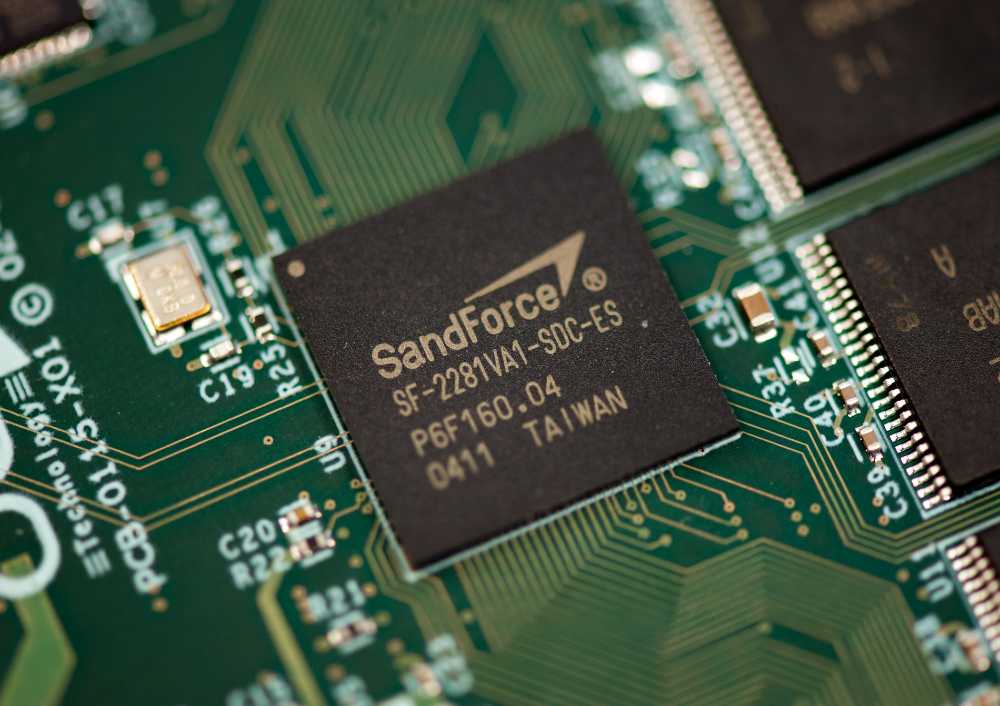Cracking the Code on SSD Longevity: Tackling Issues with SandForce SF-2281 Controller
Cracking the Code on SSD Longevity: Tackling Issues with SandForce SF-2281 Controller
Lately, ACE Data Recovery has been dealing with a bunch of requests to recover data from those vintage Solid State Drives (SSDs) made between 2010 and 2012, rocking the SandForce SF-2281 controller. The common headache? A blue screen of death (BSOD) making all the stored data vanish into thin air. This glitch isn't picky—it's hitting SSD models from big names like Kingston HyperX, Corsair Force Series 3 and Force GT, OCZ Vertex 3, SanDisk Extreme, Intel 330, 520 and 1500 Pro, Patriot Wildfire, OWC Envoy, and Mercury Electra. The culprit seems to be a mix of these SSDs aging, power hiccups, and outdated firmware carrying some nasty bugs.

What's Messing with SSD Longevity
Decoding whether your SSD will stay cool or bail on you depends on three things: how old it is, the total terabytes it's pushed around (TBW), and its drive writes per day (DWPD). The older an SSD gets, the more you're rolling the dice on its performance and how long it'll stick around. Even though the user manual might promise a solid decade, real life often shaves off a bit, depending on how hard you're pushing it. In IT lingo, SSD lifespan is often measured in TBW, with 256 TBW being the average shelf life. Once you cross that line, it's like a red flag for the memory cells—too much, and they might throw in the towel, leaving you with a data loss disaster. So, if your SSD is putting in overtime, it might be time to consider a sub, a new SSD that is.
And then there's the DWPD value, which tells you how much data your SSD can handle daily and still stay within its warranty limits. Bigger DWPD means more endurance, which is gold if you're after peak capacity and performance.
Putting SSD/Flash Endurance under the Microscope
Now, the endurance rating of NAND flash SSDs comes in write cycles, technically known as program/erase cycles (P/E cycles). It's like a ticking clock—the more cycles, the more wear and tear on the flash memory cells' oxide layer, and the worse your SSD's performance gets. Enter write amplification, another baddie that messes with SSDs. This trickster multiplies the data you actually write, cranking up the stress on those NAND flash memory cells.
Write amplification is a tricky beast, influenced by garbage collection, over-provisioning, metadata, log structures, and de-duplication. Wrangling these factors is key to keeping your SSD ticking and maintaining its A-game.
To sum it up, grasping what throws a wrench in the works of SSD lifespan and figuring out ways to tackle potential hiccups is the name of the game. As tech marches on, being a step ahead and making savvy decisions is the secret sauce for anyone relying on SSDs to play bodyguard for their precious data.
The Scoop on Solid State Drives and Why They Don't Last Forever
So, Solid State Drives (SSDs) burst onto the scene, bringing speed and efficiency to the data storage game. But here's the kicker—they've got an expiration date. Unlike those old-school Hard Disk Drives (HDDs) that can hang around theoretically forever (real talk: about 20 years), SSDs have a built-in "time to say goodbye." This is because the foundation of SSDs, those NAND Flash-based chips, can only handle so many write cycles—usually between 3,000 and 100,000 times per storage cell.
To deal with this ticking clock, manufacturers throw in wear-leveling algorithms controlled by the SSD's brainy controller. This fancy tech makes sure all the storage cells get equal action, preventing some from feeling left out and others from being overworked. If you want to keep tabs on your SSD's health, there's this thing called the S.M.A.R.T. analysis tool that spills the beans on how much life your SSD has left.
The Lowdown on Rescuing Data from SSD Disasters
Even though SSDs have proven to live a longer life than we first thought, there are still hurdles. Rescuing data from a crashed SSD is like trying to find your keys in the dark—it's tough. Unlike HDDs, when the controller chip of an SSD goes kaput, getting to both the device and storage chips becomes mission impossible. The fix? Hunt down an identical functioning controller chip, which sounds simple but is a whole different story. And that's not even mentioning the drama of trying to access data from wonky storage chips.
ACE Data Recovery: Crushing Challenges with Cool Solutions for SF-2281 Controller
Now, there's no official magic wand from SandForce or SSD vendors, but ACE Data Recovery is like the superhero of this story. Armed with their own secret hardware and software, custom-made for yanking out data from SSDs rocking SandForce controllers, ACE Data Recovery faces the music. They're taking on the fancy tech hurdles like AES encryption, RAISE, and advanced wear leveling that make data extraction from failed SSDs feel like cracking a secret code.
As a big shot in the data recovery game, ACE Data Recovery is all about embracing the challenge. They're on a mission to find new tricks not just for SSDs but for all sorts of storage devices. The quest for solutions is still on, making sure you can trust your precious data with a SSD data recovery service provider who knows how to beat the clock on SSD lifespans.
